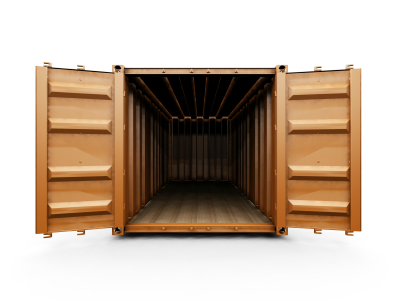Containerised self storage

Generally, renting a containerised storage space is cheaper than using a self storage unit in a warehouse. However, what you get differs in several ways: the principal security is around each person’s storage container rather than around the perimeter of the whole storage site. The separate nature of containerised storage also means that as a user you do not need to be concerned about what your neighbour is storing.
Access is usually better too, in that you can load directly into the container from a van or car – there are no corridors or staircases/lifts to negotiate. This makes containerised storage particularly suitable if you are storing heavy or bulky goods.
Why do some people prefer partitioned or purpose built storage units to containerised storage units?
The advantage of customised warehouse-type self storage is that there is more likely to be temperature control and your goods are more likely to be protected by dedicated members of staff and sophisticated video monitoring facilities.
Many people prefer to store their goods near their home and containerised facilities are harder to find in city centres – the higher value of land makes it more likely that buildings will be several storeys high. Containerised self storage is more likely where land is cheaper, and this often means on the outskirts of towns or in farms.
How do containers for self storage work?
A container is a standard size, mostly 20 foot by 8 foot (about 6 metres by 2.4 metres) externally, though occasionally the larger 40ft containers are used (although you’ll need a torch – these get very dark at the far end!). Some storage operators, where land is scarcer, split containers down so that you rent a space of 10 foot by 8 foot or even smaller. But this means that, for very small storage requirements, containerised storage often doesn’t have the flexibility of purpose-built warehouse stores.
Most of these containers are made from steel and fabricated in China. The doors are usually secured with vertical steel bars, which are opened using handles; these can be a bit stiff, but most customers quickly develop a knack for using them. In some cases the locking point is protected by a steel cowling so that any padlock cannot be forced off or attacked.
Self storage containers also usually have very small vents to ensure that the contents can “breathe”, although some operators block these up in order to create a sealed unit. The doors generally have rubber seals around them to help keep the unit dry, and the containers have raised floors which protect contents from flooding.
Who operates containerised storage?
There are dozens of container-based storage companies and several of these are multiples (a chain of storage centres owned by one company). Examples include budgetstorage.co.uk and rentcontainer.co.uk who both, like most operators, use new containers to make sure they are not at risk of water seeping in.
The rentcontainer.co.uk website has a good selection of photos giving a good idea of what container self storage usually looks like. There are very few storage operators who give you a choice between partitioned warehouses and containers. Depending on what you are storing, it is generally worth getting a price from each type of supplier.
What is the future of containers versus warehouses?
It looks likely that both containers and warehouses are here to stay; containers are cheap to buy from China – costing about £1,400 plus VAT for delivery to London – but nonetheless they are very unlikely to displace either warehouse-conversions or purpose-built warehouses.
Containers are generally cheaper and easier to load but not as strong in temperature control and flexibility of size available. Security varies on a site-by-site basis, but one advantage of containerised storage is that each unit has its own security around it.
As the industry grows, there is another role for containerised storage: in a remote location which doesn’t justify a large warehouse, but where there is demand for 20–30 storage units, a small containerised depot can meet the local demand
3 Responses to “Containerised self storage”
Leave a Reply
Subscribe to This Blog
Get new blog posts sent to you by subscribing to RSS updates or to email updates.







could u tell me how much it will cost to rent an container for 23 months?
It will probably cost twice as much as it would to rent for 12 months, where are you in the world?
Depending on the size, but a 20ft X 8ft with our company is £35 p/w